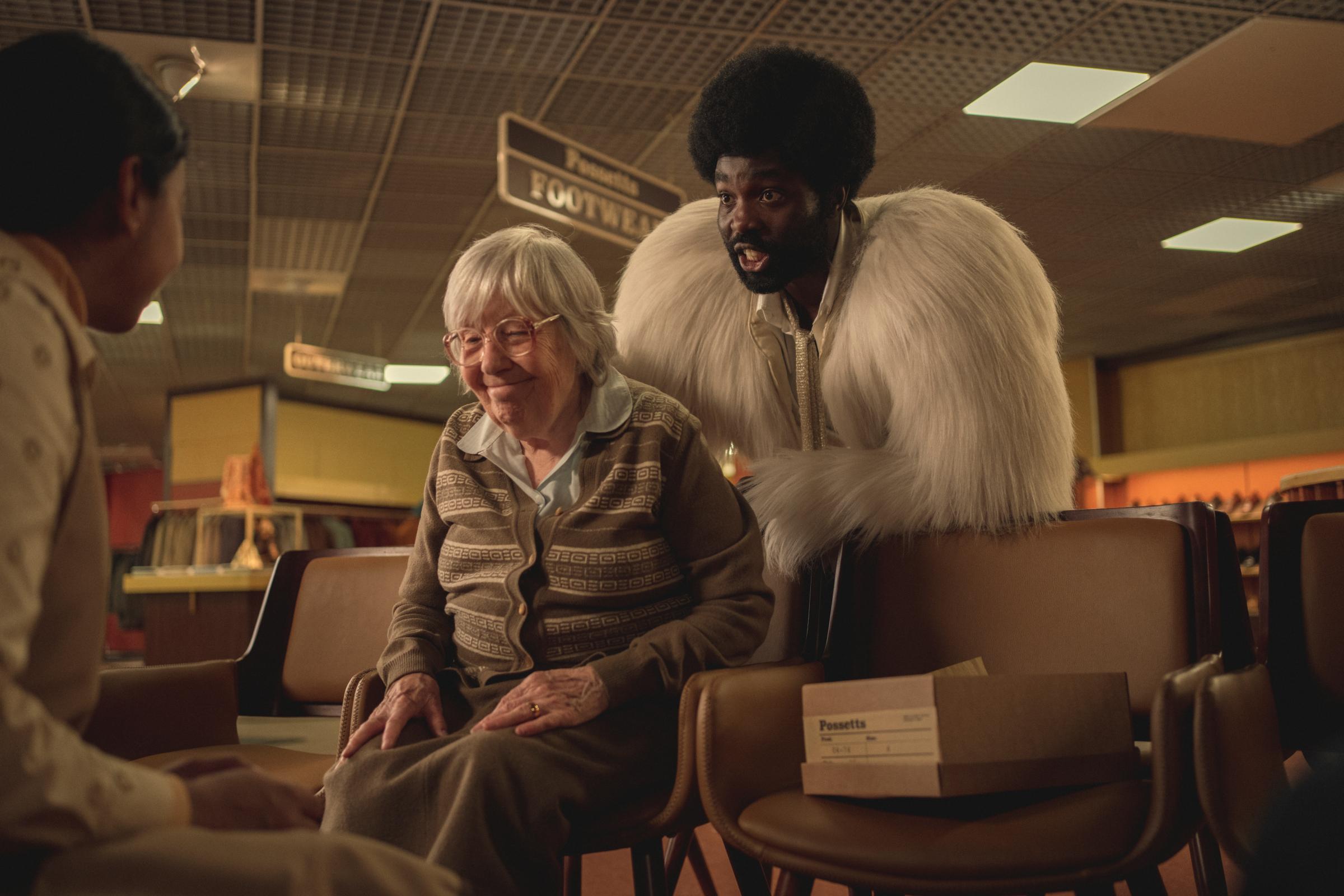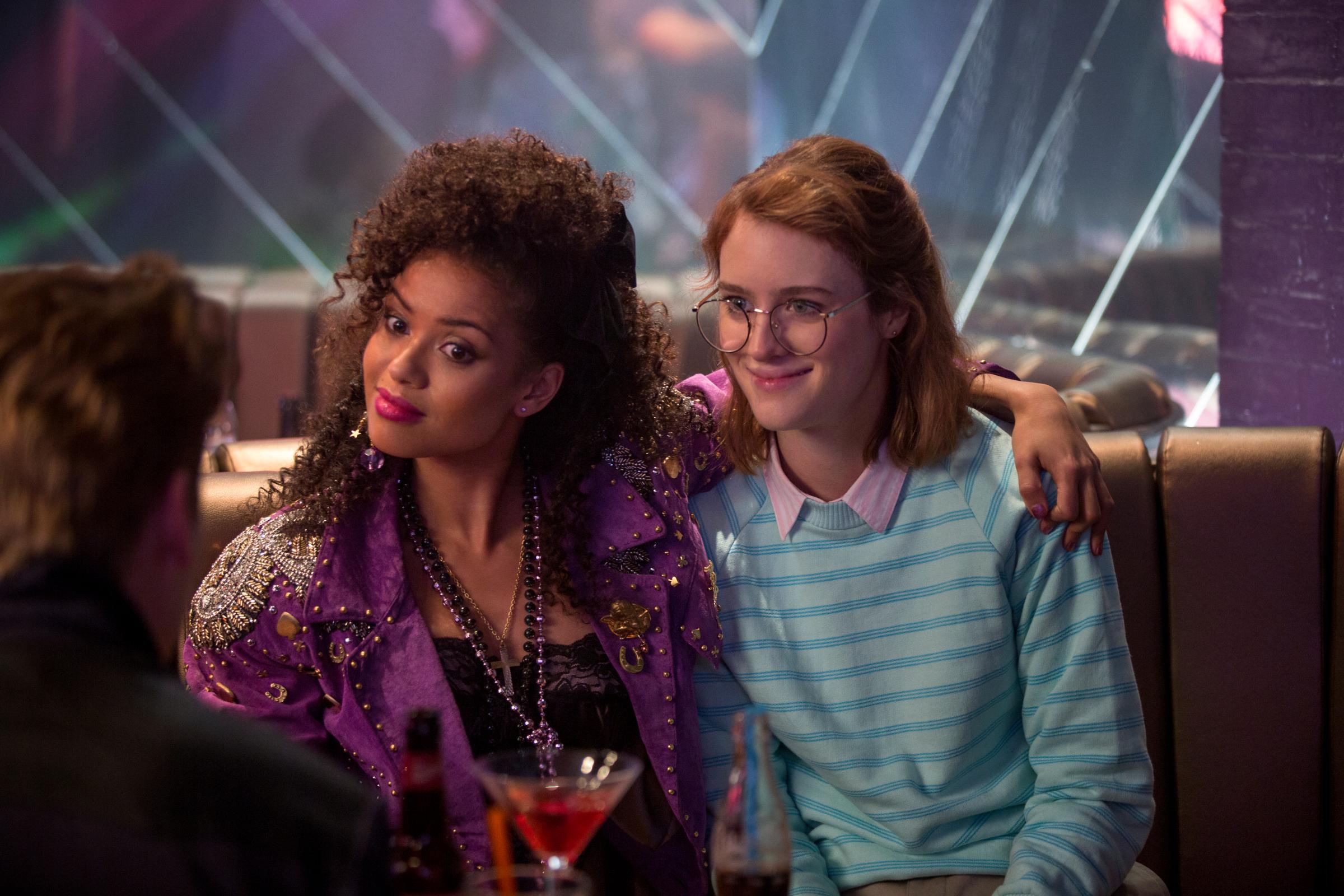No matter how you feel about Black Mirror—and opinions tend to cluster at opposite extremes of the spectrum—you have to admit it’s a brilliant title. As creator Charlie Brooker wrote when the series premiered on Channel 4 in 2011, “The ‘black mirror’ of the title is the one you’ll find on every wall, on every desk, in the palm of every hand: the cold, shiny screen of a TV, a monitor, a smartphone.” You stare into it expecting to see yourself and find only an abyss that might be your reflection filtered through technology. Our screens: dark and blank. Ourselves: same.
While genre conventions varied from one standalone episode of the anthology series to the next, and not every story took place in a dystopian future, Black Mirror could generally be described, in its first five seasons, as a science fiction show about the perils of technology. The tone was almost always grim, with endings that could make you feel viscerally ill and the black humor Brooker had honed while working on satires like Brass Eye and Screenwipe twisting the knife. But the world has changed in the past 12 years; in fact, few aspects of our global culture have changed as much as the intertwined industries of television and tech. And the show’s creator has, to his credit, realized that his sci-fi nightmares no longer have the same effect they once did. Black Mirror’s new, five-episode sixth season, its first since 2019, is very different from what preceded it. So different that it raises the question: What even is Black Mirror anymore?

In my mind, season 6 breaks down into three sections. The first two episodes, “Joan Is Awful” and “Loch Henry,” take on a contemporary screen phenomenon that must be at the top of Brooker’s mind: streaming entertainment. The last two, “Mazey Day” and “Demon 79,” are horror stories. That leaves episode 3, “Beyond the Sea,” a prototypical Black Mirror tear-jerker that casts Aaron Paul and Josh Hartnett as astronauts who are able to virtually visit their families thanks to a device that transfers their consciousnesses to look-alike robots back on Earth. “Joan Is Awful,” a five-minutes-in-the-future cringe comedy that follows a woman (Annie Murphy) who discovers that her daily life is being adapted into a streaming series starring Salma Hayek, is the only other story that evokes the uncanny tech-queasiness that used to define the show. And while “Beyond the Sea” takes place in an alternate-reality 1969, “Demon 79” is set in 1979 and “Mazey Day” in the early aughts. Apparently nostalgia is the new future shock.
It’s true that Black Mirror has broadened its scope over time. The tone became more varied after it moved to Netflix for its third season. Episodes like “Nosedive,” written by Michael Schur and Rashida Jones, and the breakout queer romance “San Junipero” explored a lighter side of tech-innovation hell. In 2018, the “interactive film” Bandersnatch offered subscribers a playable Choose Your Own Adventure novel. Most recently, the disappointing fifth season betrayed signs of fatigue with the whole Black Mirror concept, delivering sci-fi camp in the form of macho gamers who can’t stop making their VR avatars have sex with each other and a lonely teen who projects her obsession with a pop star onto a doll-like robot toy made in the singer’s image. (At least that episode yielded a hilarious fusion of Nine Inch Nails music and vapid pop lyrics.)

The intervening four years in the real world have provided no shortage of dystopian inspiration: a lethal pandemic, a crypto roller-coaster, the launch of ChatGPT and the subsequent AI panic. But Brooker, it seems, has grown weary of ripping from scary headlines. By setting so many episodes in the past, he explains in the season 6 production notes, “I didn’t have to think, ‘What’s the episode of Black Mirror about NFTs,’ which is an idea that depressed me greatly.” Instead, he “wanted to throw out some of the core assumptions of what a Black Mirror episode is”—in part because the format has been so influential. “When we started doing the show, there weren’t many dystopian sci-fi shows around. These days, you can’t hurl a smartphone across a room without hitting three dystopian sci-fi shows. With season 6, there has been a conscious effort to rip up the rule book, keep it unpredictable for viewers, and maybe expand its remit.”
The results of this experiment are mixed. On the plus side, the new batch of episodes is a major improvement over season 5. I had more fun watching “Demon 79,” which casts We Are Lady Parts star Anjana Vasan as a downtrodden sales clerk who accidentally summons a demon (Paapa Essiedu from I May Destroy You) and must commit three murders in order to prevent the apocalypse, than I have with any episode since “San Junipero” in Season 3. The retro-futuristic setting of “Beyond the Sea” evidently allowed Brooker to access the more poetic, emotional register that defined the show’s best early episodes. While I didn’t love the rest of the season—I’ve never been the show’s biggest fan—only “Mazey Day” felt like a waste of time.

It would be unfair, as well, to say that there’s no longer any unifying factor among Black Mirror stories. Flaws aside, the season’s sanctimonious paparazzi polemic “Mazey Day” and undercooked true-crime sendup “Loch Henry” both take aim at the mass media; as Brooker has pointed out, that sort of criticism has been baked into the show since the beginning. What even “Demon 79” shares with its predecessors is an arc that begins with a shift in reality as we know it and ends in a monster twist. Every episode at least dabbles in social commentary.
Are these few common threads enough? Brooker believes they are—and hey, it’s his show and he can do what he wants with it. “A Black Mirror episode can be whatever the hell we want it to be. There are no rules,” he insists in the production notes. “Part of the impetus for doing the show in the first place was to try to make something unlike anything else on television.” But here’s the problem: Black Mirror as currently conceived isn’t unique. It’s The Twilight Zone, which Brooker has cited as an inspiration since the beginning, and which has been airing, on and off, on American TV for more than six decades. Billed as a “Red Mirror presents” title, “Demon 79” could’ve been an episode of George A. Romero’s 1980s horror anthology Tales From the Darkside or Guillermo del Toro’s Cabinet of Curiosities, which is already on Netflix.
Sign up for Worth Your Time for weekly recommendations on what to read, watch, and listen to.
Maybe it’s silly to overthink this stuff. After all, how a show defines itself is ultimately less important than the quality of the stories it tells. And by the latter measure, Black Mirror is on an upswing. What gives me pause is the question of why Brooker would radically reconceptualize a series whose premise has exceeded its expiration date, instead of just moving on to a fresh idea. Should we blame Streamberry Netflix for clinging to a popular title? In that sense, I guess, Brooker is still staring into the void—a black mirror that is also, now, a gaping maw of content.
More Must-Reads from TIME
- Why Trump’s Message Worked on Latino Men
- What Trump’s Win Could Mean for Housing
- The 100 Must-Read Books of 2024
- Sleep Doctors Share the 1 Tip That’s Changed Their Lives
- Column: Let’s Bring Back Romance
- What It’s Like to Have Long COVID As a Kid
- FX’s Say Nothing Is the Must-Watch Political Thriller of 2024
- Merle Bombardieri Is Helping People Make the Baby Decision
Contact us at letters@time.com